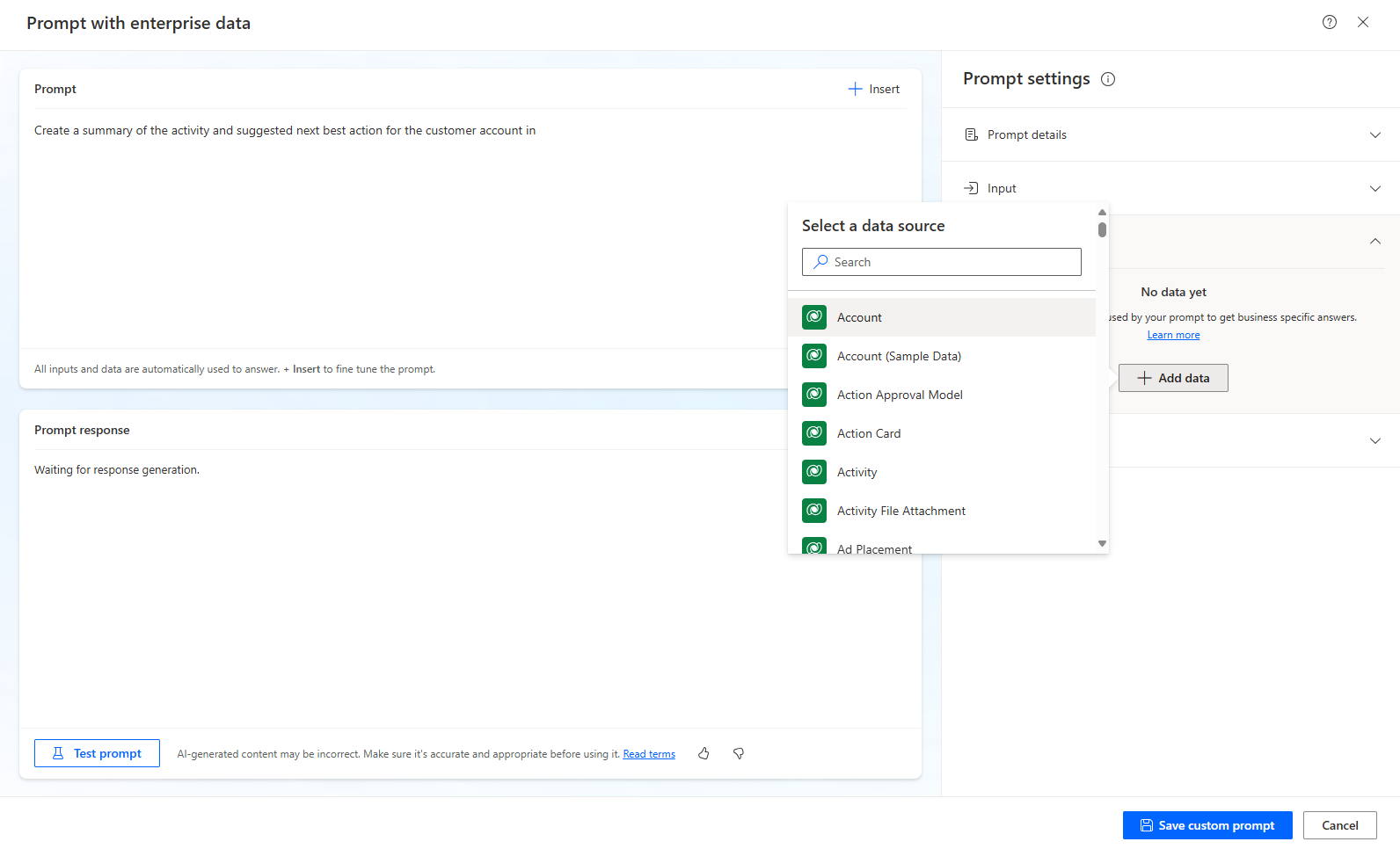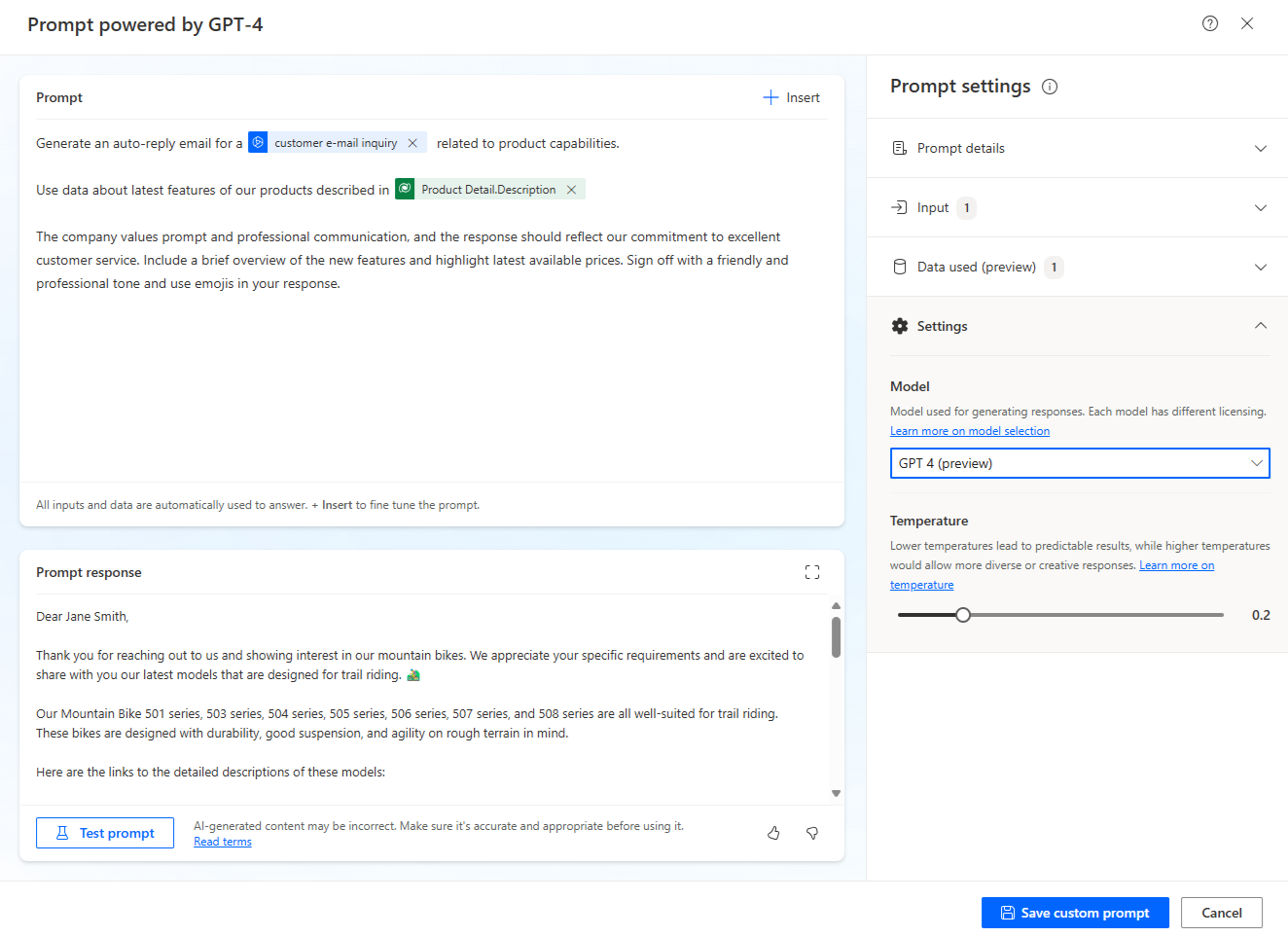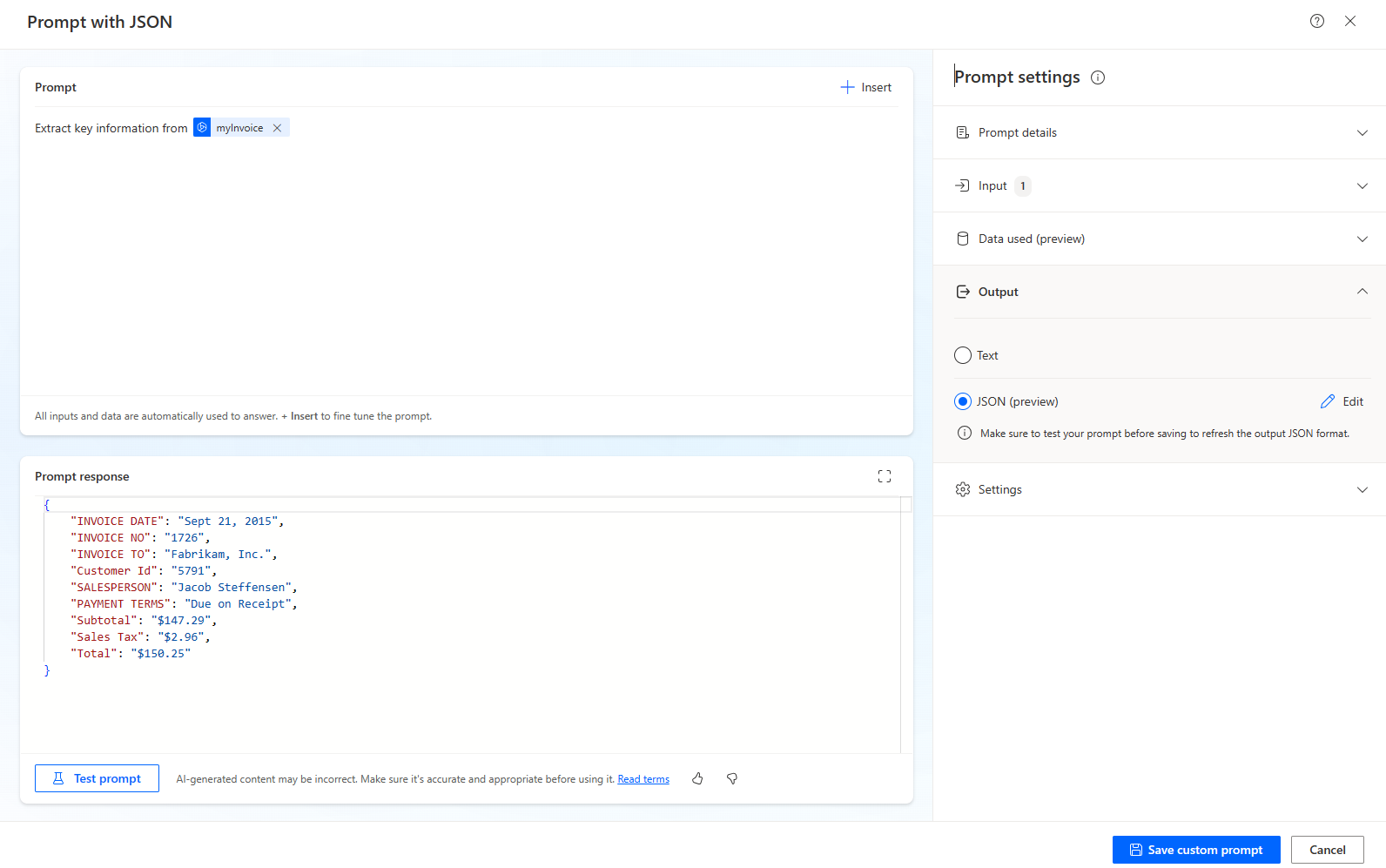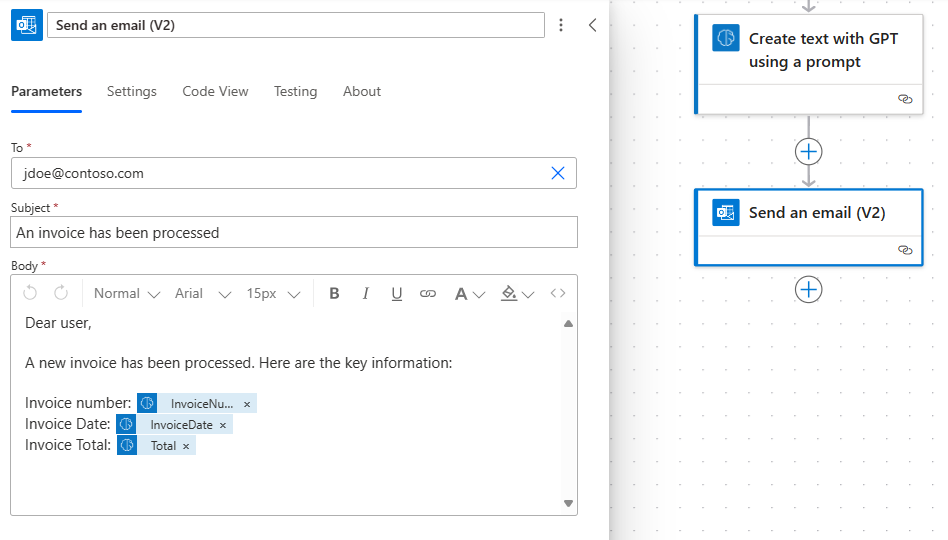Generative AI Prompts to automate content processing
We are excited to share the newest AI Builder features in Power Automate, giving citizen developers advanced tools to incorporate content processing skills that leverage Generative AI.
Keep reading to find out more about how to craft Power Automate actions that will transform your business processes with the power of GPT-4, including the ability to automate GPT Prompts with enterprise knowledge stored in Dataverse, generate structured outputs with JSON formatting and adjust GPT model temperature settings.
Use the power of GPT to process content using your enterprise knowledge
Prompts are the natural language instructions that users provide to Large Language Models (LLMs) to produce a specific response. With AI Builder’s “Create text with GPT using a prompt” action, you can use prompts to make AI powered functions that can process and generate text content dynamically with GPT. Prompts for example can include instructions in natural language that will guide your cloud flow or desktop flow to accurately process an incoming e-mail, analyze the content of a document or automate insights extraction from your data. Today, we are adding more features to Prompts to enable users to connect their enterprise knowledge and generate trusted outputs.
Enterprise knowledge is crucial for building effective prompts because it ensures contextual relevance, accuracy, and precision. Understanding the specific domain language and business context allows for crafting prompts that are aligned with the company’s goals and processes. This leads to streamlined workflows, consistent outputs, and enhanced user experiences by providing tailored and intuitive interactions.
In the Prompt Builder interface, a new option to add data sources is now available, allowing you to select a Dataverse table and its related entities as knowledge associated with your prompt. The fields selected will be used by the Generative AI model to expand its knowledge base with current enterprise specific data that will help provide the most contextual response to the prompt.

The new interface allows you to filter the data to add to your knowledge source, and to reference the associated knowledge inline within your natural language instruction. This will unlock many new enterprise specific actions, like for example generating summaries of account interactions based on Dataverse data, classifying content based on custom categories stored in Dataverse, or suggesting the most appropriate actions to respond to a customer query based on historical data stored in Dataverse. Learn more about prompt data grounding in our documentation.
GPT-4 Model selection and temperature settings
Another new feature in Prompts is the ability to select which model to use to process a given action, and to control the Temperature associated with the given model. Using the model selector, users can select to opt-in to use GPT-4o (rolling out in the coming weeks), GPT-4 (gpt-4-32k-0613 available today) or GPT 3.5 (gpt-3.5-turbo-0613 default model) for individual prompts. This allows for greater flexibility to optimize costs and performance associated to Prompts based on what tasks will be performed by the prompt and the context window required to perform the task.

Alongside the model selector, a slider has also been added to control the temperature of the Generative AI model, allowing you to adjust the model to be more deterministic or more creative to perform a given task. Learn more about model selection and parameters in our documentation.
JSON output formatting for reliable end-to-end automation
By default, prompts generate a text output allowing you to automate the process of creating text-based data that can be used across an end-to-end workflow. To optimize how to parse and re-use text data created by GPT, we’re introducing a new feature that allows you to generate a structured text output formatted in JSON. This new capability will allow you to ensure that the generated data always follows the same structured schema, so that you can reliably use it in downstream actions in your flow. This will be particularly useful when you want GPT to generate structured content like a project schedule, or extract data from a document like the different fields associated to an invoice or purchase order.
To trigger structured output formatting, you can select JSON as an output format in the Prompt Builder. The target JSON structure will be auto-detected based on the prompt instructions provided, but you can also edit the schema to force a given output structure.

Once you have defined your desired schema and saved your prompt, the output format will be locked, ensuring that your prompt will always generate the same structured format and that the output fields will automatically be available for use in downstream actions in Power Automate:

Get started
Find the most recent documentation for our new features and learn how to create more effective automation with Generative AI Prompts:
- Create a prompt | Microsoft Learn
- Use your own data in a prompt | Microsoft Learn
- Model selection and temperature settings | Microsoft Learn
- Change the output of your prompt | Microsoft Learn
- Distribute your prompt using a solution | Microsoft Learn
- Human Review for automation with a prompt | Microsoft Learn
